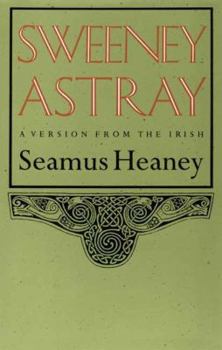Sweeney Astray
Select Format
Select Condition 
Book Overview
Sweeney Astray is Seamus Heaney's version of the medieval Irish work Buile Suibne. Its here, Mad Sweeney, undergoes a series of purgatorial adventures after he is cursed by a saint and turned into a bird at the Battle of Moira. Heaney's translation not only restores to us a work of historical and literary importance but offers the genius of one of our greatest living poets to reinforce its claims on the reader of contemporary literature.
Format:Paperback
Language:English
ISBN:0374518947
ISBN13:9780374518943
Release Date:April 1985
Publisher:Farrar, Straus and Giroux
Length:96 Pages
Weight:0.40 lbs.
Dimensions:0.3" x 5.9" x 9.2"
Customer Reviews
1 rating
Magnificent
Published by Thriftbooks.com User , 22 years ago
"Sweeney Astray" is a masterpiece on many levels: for the complex weave of its themes to the lyrical quality of its prose--accentuated greatly, of course, by Seamus Heaney's virtuoso translation. We follow mad Sweeney in his crazed wanderings through the forest and hills, torn within himself by his love of the wild and his incurable loneliness. The tale is presented as chunks of narrative interspersed with segments of poetry, their quiet, melancholy beauty evoking the sounds of windsong and rain. There is an ethereal quality to this text that makes it difficult to describe. Although it would seem to have a storyline, in reality it is a song, and each "event" a new strain of music. Sweeney's longing for his lost life as a man and king, even as he is unable to stay away from his beloved wilds of Glen Bolcain, illustrate the conflict between the desire for peaceful conformity and for transcendence. This conflict is echoed in the struggle that was ensuing in Ireland even as this work was being written, the struggle between the Celtic religion and the new influx of Christianity. In this way does "Sweeney Astray" illuminate a historic revolution, while at the same time presenting themes that span eternity.





